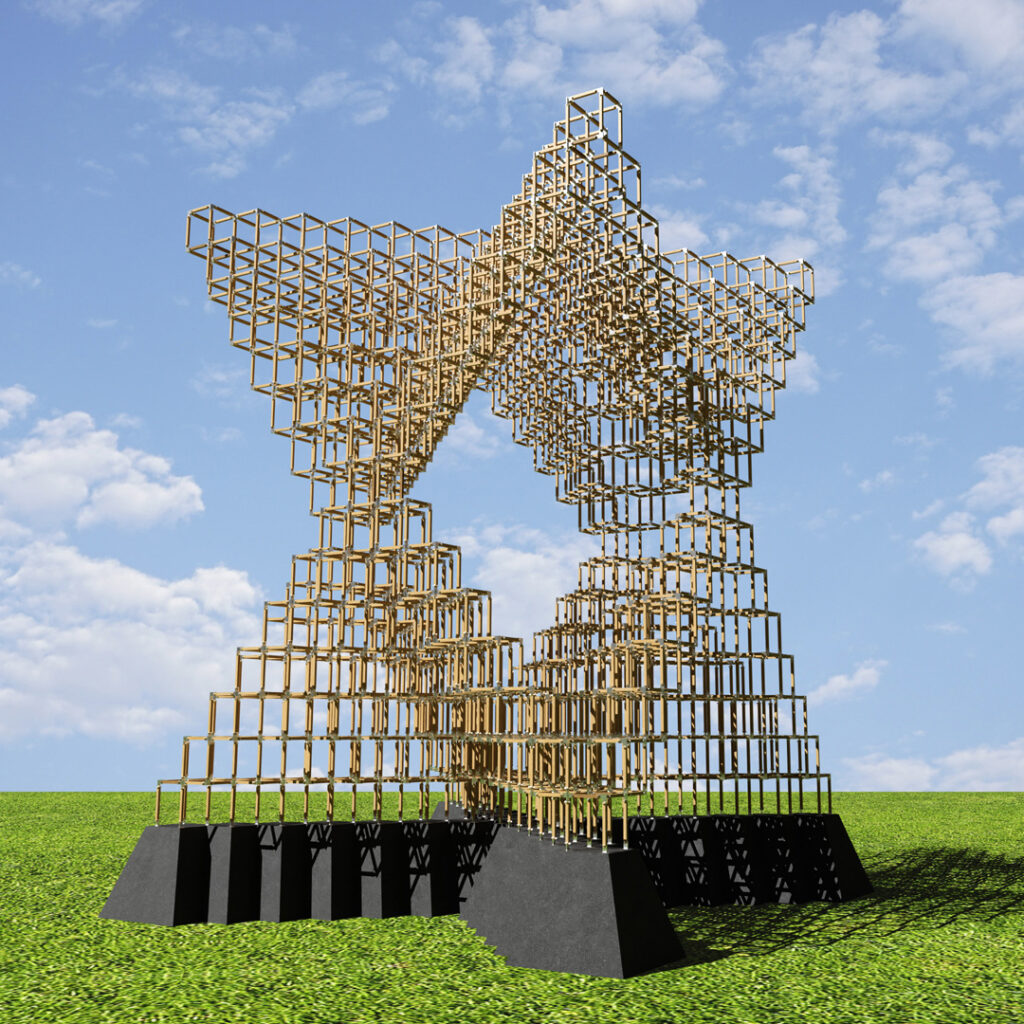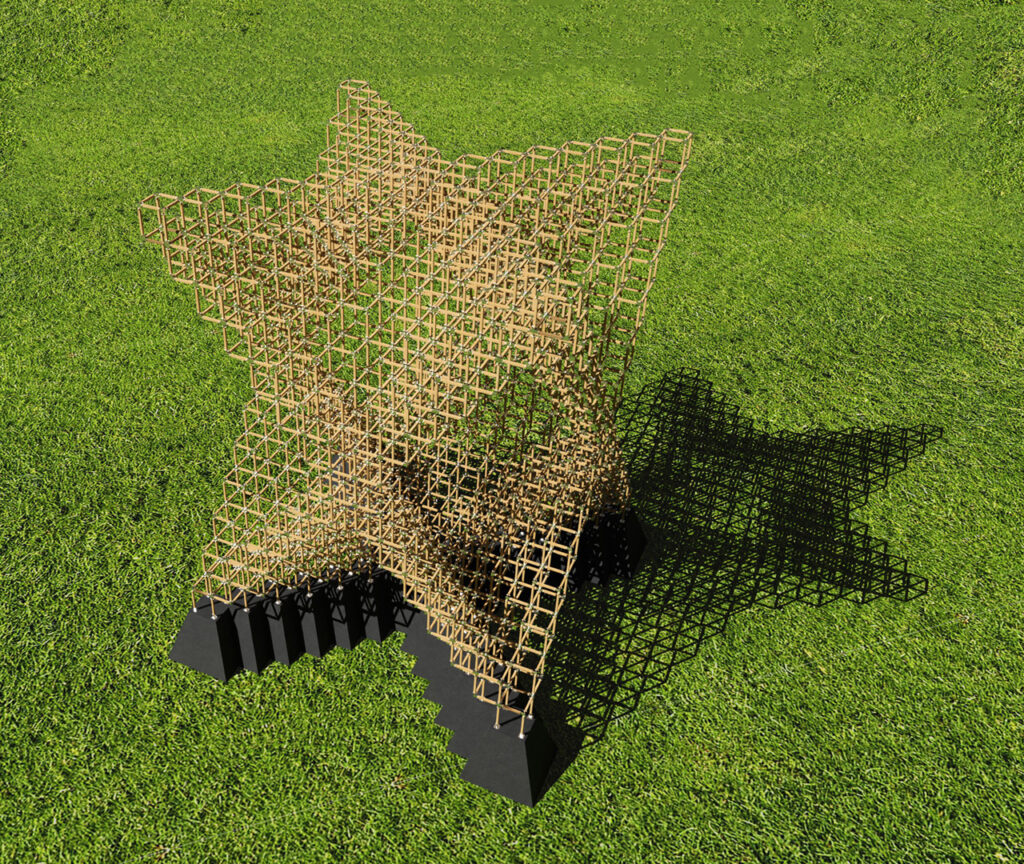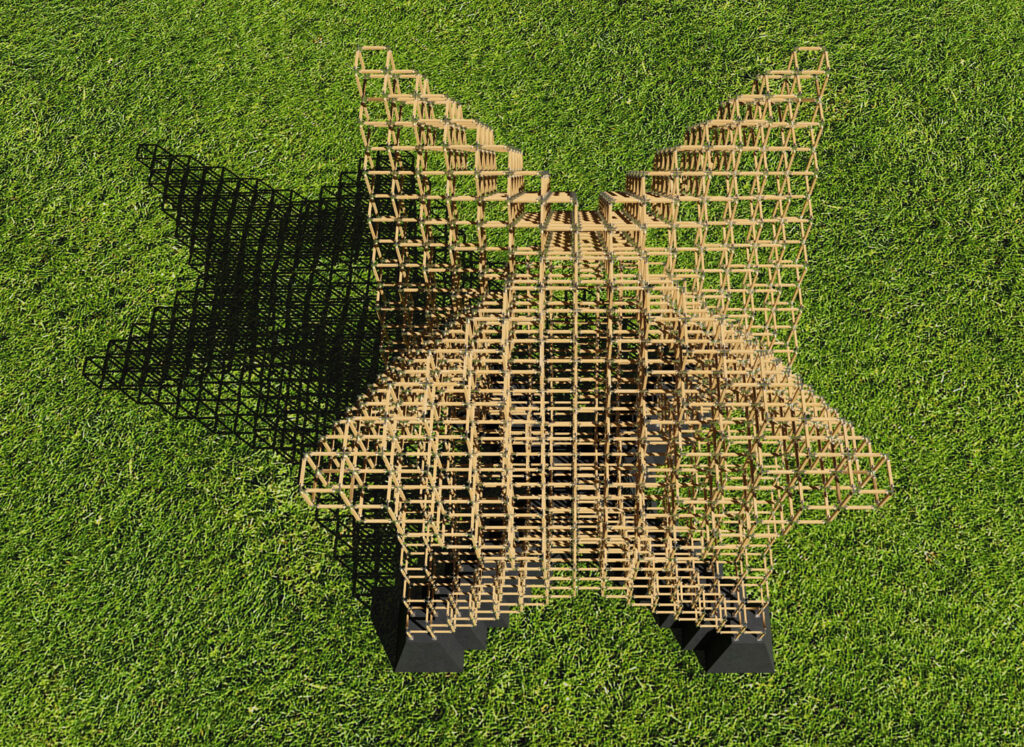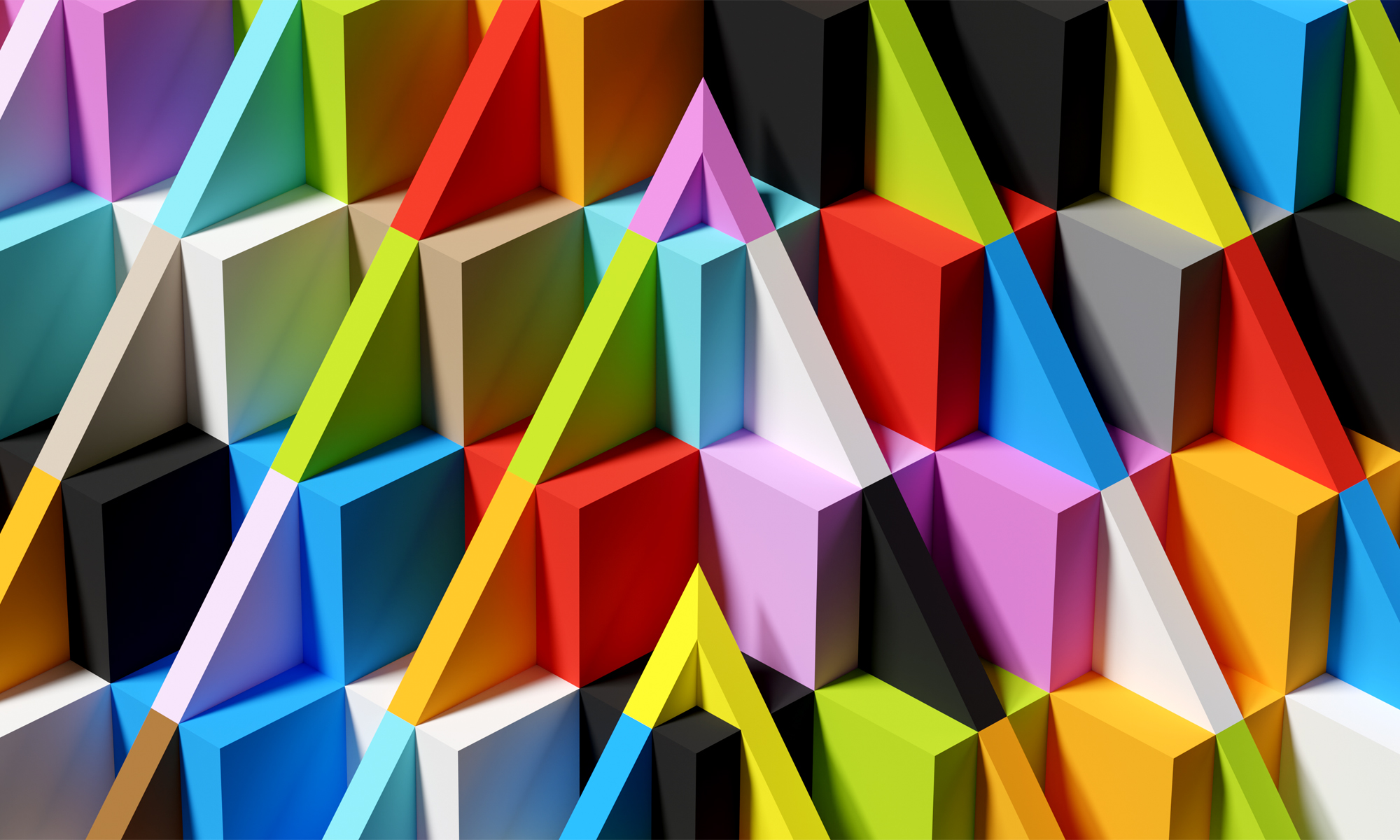I’m not sure what to call this exploration of form. Is it architecture? Is it sculpture? Perhaps it straddles both realms.
One day looking at the Great Pyramids at Giza, seeing the thousands of blocks stacked up forming the shape of the pyramid, I had a AHA moment. These massive platonic solids, smoothed out with a cladding of limestone covered the blocks. I would take a cue from these blocks and begin experimenting with using blocks to create 3d structures in my own way to make my art.
I’m going deep into the weeds here (the nerd in me can’t help it) but please indulge me as it helps give insight into what you are looking at. I’ve always found the form of the Stellated Octahedron beautiful. A Stellated Octahedron is two Tetrahedrons, one facing up and one facing down intersecting each other. A Tetrahedron for those uninitiated is a 3 sided pyramid with 4 triangular faces, 6 straight edges and 4 vertices (corners). When putting two of these together it goes from 4 vertices (tetra) to 8 vertices (octa). The Stellated Octahedron was first described in writing in the book De Divina Proprotione’, 1508, by the Italian mathematician Luca Pacioli with illustrations by Leonardo Da Vinci. In 1609 Johannes Kepler would give it the name it’s known as today, “Stella Octangula”, Latin for eight pointed star and hence the name it has known today in English translation “Stellated Octahedron”.
In my version, I’ve structured the form with skeletal boxes, outlining only the outer perimeter of the two intersecting tetrahedrons, leaving an absence at its center.
The delicateness of the structure is to invoke the ethereal and the ephemeral, a feeling that the structure occupies space and time but is dissolving.
click on images to enlarge (except mobile devices)






